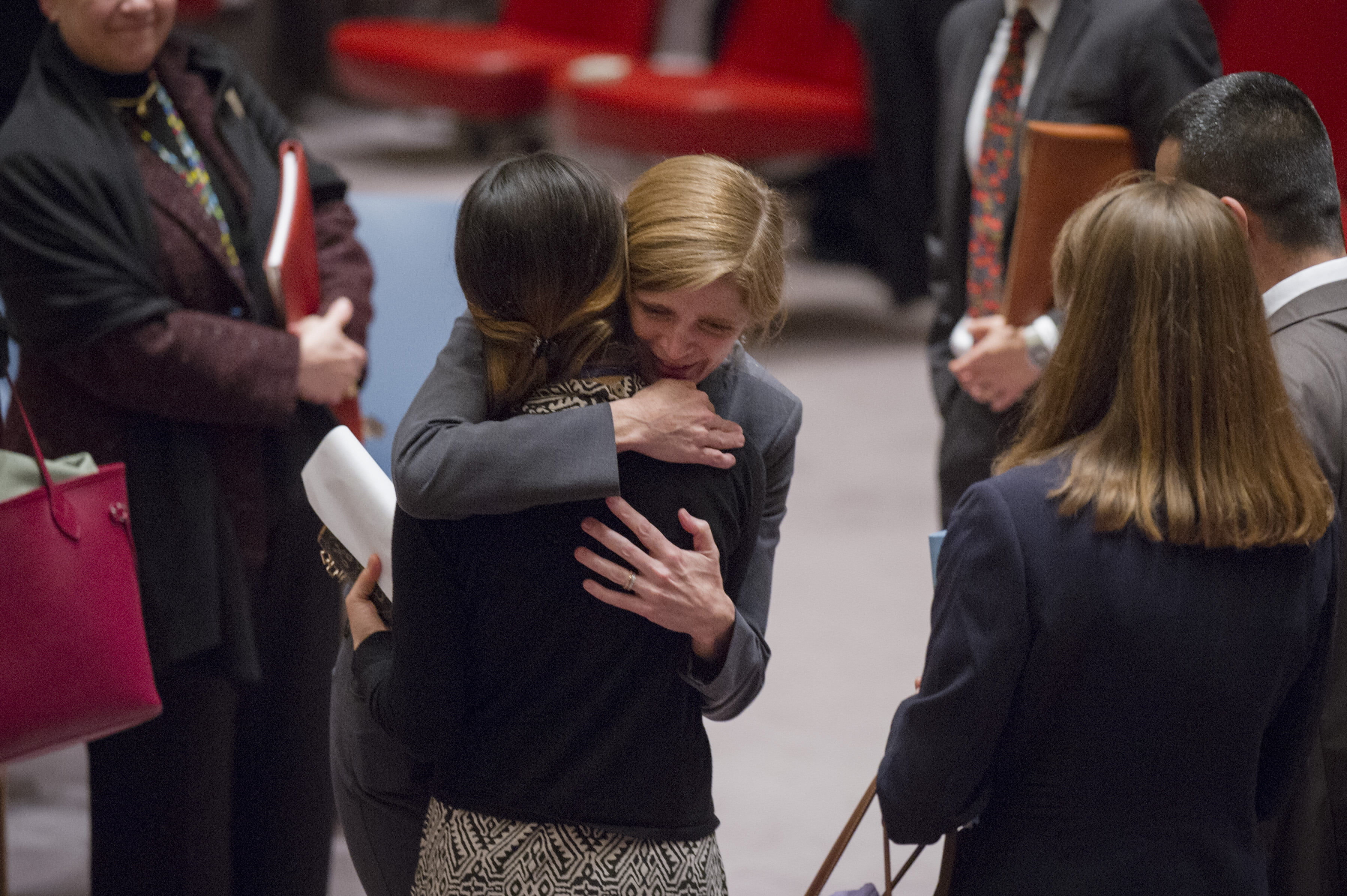A UN human rights panel released evidence today that ISIS is committing genocide against the Yazidi group, a religious minority that for centuries has lived along the border of Iraq and Syria. The area is known as Sinjar, and in August 2014 it was overrun by ISIS which then began systematically killing, enslaving and raping Yazidis.
The report concludes darkly:
Over 3,200 Yazidi women and children are still held by ISIS. Most are in Syria where Yazidi females continue to be sexually enslaved and Yazidi boys, indoctrinated, trained and used in hostilities. Thousands of Yazidi men and boys are missing.
The genocide of the Yazidis is on-going.
The panel that issued the report was first created by the UN Human Rights Council at the outset of the Syrian civil war. It’s lead by a Brazilian human rights lawyer Paulo Pinheiro and includes the former prosecutor at the Yugoslav war crimes tribunal, Carla Del Ponte, among others. Several times a year, the commission publishes reports detailing the latest evidence of war crimes committed in Syria. This is the first time that the commission has specifically looked into the question of whether ISIS persecution of the Yazidis amounts to a genocide.


The evidence is damning.
“Genocide” has a specific definition under international law. Crimes like mass murder, enslavement, cultural destruction and forced displacement of an ethnic or religious group alone are not sufficient to determine whether a genocide occurred. Rather, those acts need to be committed with an “intent to destroy, in whole or in part, a national, ethnical, racial or religious group, as such.” In other words, to rise to the level of genocide, the purpose of a mass murder or forced displacement is to wipe out a group because of who they are.
The commission has compiled evidence that ISIS is committing crimes against the Yazidis with genocidal intent.
ISIS, in an article entitled “The Revival of Slavery Before the Hour” published in its English language magazine Dabiq, indicated that, prior to the attack on Sinjar being launched, it had sought to determine how the Yazidis should be treated under ISIS’s ideology.5 In the same article, ISIS declares, “Upon conquering the region of Sinjar… the Islamic State faced a population of Yazidis, a pagan minority existent for ages in the regions of Iraq and Sham [Syria]. Their continual existence to this day is a matter that Muslims should question as they will be asked about it on Judgment Day…”
Having decided that the Yazidis were a mushrik group, judged not to believe in God as worshipped by Ahl Al-Kitab, or the People of the Book, ISIS stated that it dealt with this group as the majority of fuqaha [religious scholars] have indicated how mushrikin should be dealt with. Unlike the Jews and the Christians, there was no room for the jizyah payment [a tax to be paid to avoid conversion or death]. Also their women could be enslaved unlike the female apostates who the majority of the fuqaha say cannot be enslaved and can only be given an ultimatum to repent or face the sword. After capture, the Yazidi women and children were then divided according to the Shariah [religious law] amongst the fighters of the Islamic State who participated in the Sinjar operations, after one fifth of the slaves were transferred to the Islamic State’s authority to be divided as khums [spoils of war]…. The enslaved Yazidi families are now sold by the Islamic State soldiers as the mushrikin were sold by the Companions.
ISIS’s plan to attack Sinjar was presaged by research into how its religious interpretation mandated the treatment of the Yazidis they would find there. This interpretation determined the behaviour of its fighters during the attack on Sinjar and in its and their subsequent abuse of Yazidi men, women and children. ISIS’s killing of the men and boys who did not convert, its sexual enslavement and enslavement of Yazidi women and girls, and its forced abduction, indoctrination and recruitment of Yazidi boys to be used in hostilities, de facto converting them, adhered seamlessly to the religious mandates set out by its “scholars” concerning how to treat Yazidi captives. The objectives for the capture and enslavement of Yazidis have been set out in various ISIS statements and documents.
The report notes that Arab groups in the area were not subjected to this kind of abuse, further bolstering the case that the purpose of the attack on Sinjar was not just territorial control, but to wipe out the Yazidis.
Justice for Yazidis?
The report recommends that the Security Council refer the situation to the International Criminal Court for further investigation and prosecution. This is how it is supposed to work. In the past, after reports like this, the Security Council has granted the ICC jurisdiction in Darfur and Libya. But it is unclear if the politics at the Security Council right now would support such a move. (And the only way the ICC can pursue this case is through a referral by the Security Council. The court has no jurisdiction in Iraq and Syria otherwise.)
On the Security Council, Russia, China and the USA are not members of the ICC, but these countries are not ideologically opposed to it either. In the last 11 years, they have either supported or abstained from ICC referrals. But in the case of Syria, Russia has long blocked efforts to give the ICC jurisdiction in Syria, for fear that it may target the Syrian government.
The big question now is whether countries like the USA, the UK and France are willing to draft a Security Council resolution that narrowly circumscribes an ICC referral to crimes committed against the Yazidis–and whether or not Russia trusts the ICC prosecutor to limit her investigation to ISIS perpetrators. If so, then ISIS commanders may yet have warrants issued for their arrest for the crime of genocide.
